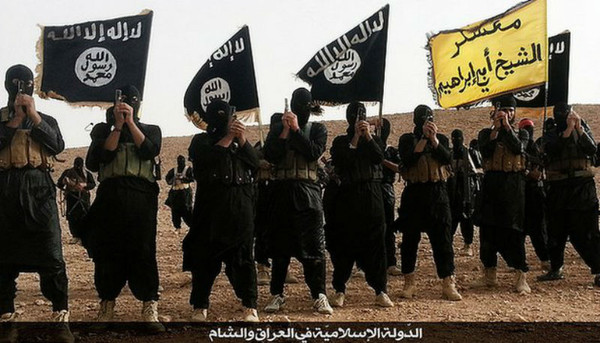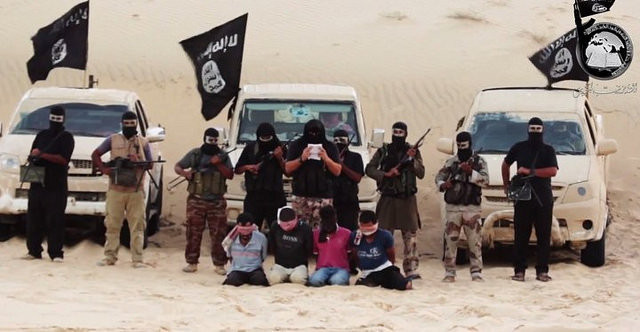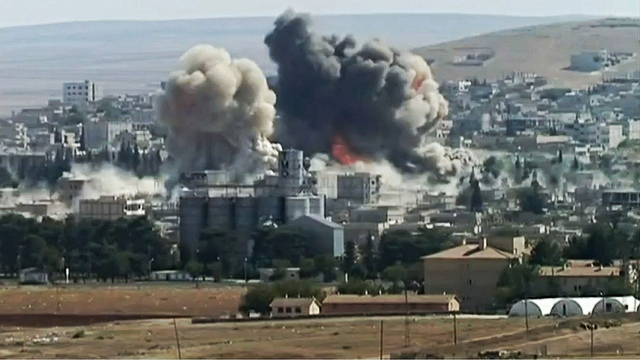
Five Things to Watch for from ISIS in 2016
This article is by ASP Adjunct Senior Fellow Pascale Siegel
Despite our repeated pledges and the West’s renewed commitment, ISIS (aka Daesh) will not go away in 2016. Rather than be defeated, the group will adapt and pose new grave dangers. Here are five evolutions to look for.
1) In response to increased coalition pressure on its territories in Iraq and Syria, Daesh will continue to open ‘new battle fronts.’ This process, started in late 2014, is likely to

Photo Credit: Day Donaldson/Flickr
accelerate. In his December 26 speech, al-Baghdadi encouraged his followers to mobilize in “The Levant, Iraq, Yemen, Afghanistan, the Caucasus, Egypt, Libya, Somalia, the Philippines, Africa, Indonesia, Turkistan, Bangladesh, and in every place.” This decentralization of operations will make it easier for Daesh to plan and execute attacks, prolong conflicts/failed state situations, and harder for the international community to mobilize resources against each of these heavens. Of primary concern is the deteriorating situation in Libya, which Daesh has been successfully exploiting since late 2014. Thanks to emissaries sent from Iraq, Daesh has been able to capitalize on the political chaos in Libya to assert control over a long stretch of coastline between Sirte and Derna.
2) This increased decentralization of resources will facilitate the intensification of terrorist

Photo Credit: U.S. Department of State
attacks against soft targets around the world. Some of these attacks will be planned, manned, and directed by Daesh, much like the November 13th assaults in Paris. Others, likely less sophisticated, will be self-generated by autonomous cells and individuals inspired by the group’s ideology. The foreign fighters who have flocked by the tens of thousands to Daesh’s territory in Iraq/Syria will provide the footsoldiers for this campaign. Where Daesh will strike is difficult to predict and will be the result of ideology, means, and opportunities. As Daesh casts its struggle as one between the “Ummah of Islam” (led by Daesh) and the rest of the world cast as “the world of disbelief,” no country is protected or safe from Daesh’s wrath. In his last speech, al-Baghdadi singled out Saudi Arabia. The countries were Daesh has developed capabilities and the countries of origin of its foreign fighters should be considered prime targets.
3) Daesh will continue to perfect ways to evade the international pressure by increasing operational security. On the communications side, it will embrace encrypted platforms to evade surveillance. Recently, the heavily encrypted application Telegram has gained traction among Daesh supporters. There is no evidence that Telegram itself has been used operationally. However, officials believe that consider that “some form of secure communications would have been needed” to plan the November 13th attacks. A platform

Photo Credit: Desiree Catani/Flickr
like Telegram provides key functions such as public or private groups, private or secret chats, end-to-end encrypted communications that are appealing to a decentralized group seeking to coordinate operations between franchises across the world. On the personnel side, Daesh will strive to hide its foot soldiers in plain sight, making them look and behave inconspicuously in the society they operate in so they can go undetected until they are mobilized for operations. In 2015, Daesh took advantage of the flow of refugees to Europe to infiltrate and exfiltrate fighters (including the foot soldiers of the November 13th attack). The success of this operation suggests that it will reuse the same tactics in the future. In early January, Daesh released the English translation of an old Al-Qaeda pamphlet on operational security. None of the advice provided is particularly new, such as shaving the beard, dressing western-style, wearing a Christian cross… The reissuance of the guidance in the major European vernacular language indicates that Daesh is empowering its agents and sympathizers to evade monitoring. This is likely to compound the difficulties of Western intelligence, which relies partially on behavioral indicators to assess the dangerousness of specific individuals of interest.
4) In the so-called ‘Caliphate’, Daesh has been under pressure and losing territorial control. It is expected that the pressure will remain, unless Daesh is able to successfully introduce some game changer, which it is working on. According to a recently released series of videos, Daesh is trying to repurpose air-to-air missiles into surface-to-air ones in a technical center in Raqqa where it is researching and developing new weapons. Contrary to the other tactics that Daesh has been pursuing (gruesome brutality in the form of decapitation, crucifixion, immolation or chemical weapons), the acquisition of operational surface-to-air missiles is the nightmare scenario. It would put Daesh in a position to threaten the coalition’s near complete air superiority over Iraq and Syria. Such new risks could sow the seeds of discord in the coalition as members might reconsider their participation or how they contribute to it, slow down the operational tempo, and ultimately endanger the cornerstone of the international coalition’s campaign. For memory, the capture and burning alive of Jordanian pilot Moaz al-Kasasbeh in February 2015 led the UAE to suspend its role in the campaign, arguing that the pilot should have been rescued.

An R-13M missile, one of the possible types ISIS is trying to reengineer.
Photo Courtesy: MKFI/Wikimedia Commons

Photo Credit: quapan/Flickr
5) By the end of 2016, Daesh will remain a force to be reckoned with capable of maintaining territorial control and launching terrorist attacks of varying scope thanks to increased operational security. Its physical space in Iraq and Syria will not be eliminated. Other safe heavens will have sprung up in northern Africa, the Caucasus, and South East Asia. Returning foreign fighters will be a constant source of concern in their homelands of origin, in no small part because determining the propensity for violence among all who return will remain more art than science.





